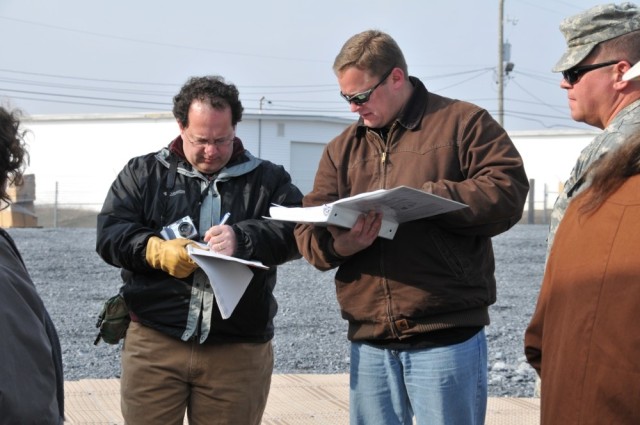Representatives from government and industry have commenced five weeks of analysis and activity at Fort Indiantown Gap, Penn to improve the Army's digital tactical operations centers and command posts.
Running from March 9-April 18, Operation TOCFEST brings together Army systems engineers from the U.S. Army Program Executive Office, Command, Control Communications-Tactical, other PEOs, capability managers from U.S. Army Training and Doctrine Command, manufacturers from industry and others using TOC equipment from the 56th Stryker Brigade Combat Team, Pennsylvania National Guard.
"We're bringing the key people together to baseline the standard for the command post, said Project Manager for Tactical Radio Communications Systems, Col. Cris Boyd. "In doing so, we want to support Army commanders in their art - the effective command of complex, dynamic operations."
Operation TOCFEST will help influence how command posts will be institutionally described and trained, and how equipment will be allocated within the command post, Boyd said.
Command posts are the nexus where information, communications and decision-making meet. They vary in size according to the unit they control but they are always arranged internally according to function, such as: current operations, maneuver, intelligence, fires, protection, sustainment and plans sections, according to Boyd.
This five week effort will continue the vast change in command posts that Maj. Marco Barrera, of the PM TRCS Technical Management Division has witnessed in recent years. "It is a dramatic difference today with the infusion of information technology and all of the digital systems with a lot more situational awareness for a commander and a staff," he said.
Formerly, the focal point of a command post was a paper map with Soldiers nearby manning rows of radios. Now, command posts reflect the "digitization" the Army undertook starting in the early 1990s. They include integrated laptop and desktop computers, large screen displays, CP-to-CP collaboration systems, telecommunications equipment, power generators and environmental control units.
"We have never had the opportunity to stop, stand back and take a look at a TOC and optimize it, do the environmentals on it," Boyd said. "Are the generators too loud; are they too close; do they provide adequate power generation for the ABCS suite and other electrical items in the CP'"
"ABCS" refers to Army Battle Command Systems Version 6.4, which began to be distributed Army-wide in 2003. It is a suite of computer applications that support various Soldiers who direct specific functional area operations. For example, ABCS 6.4 allows Warfighters to plan logistics, plan fire support, track one another's whereabouts on a digital topographical map using Global Positioning System technology, access weather information, share intelligence, predict improvised explosive device threats and manage airspace activity.
Refining the set up, equipment and capabilities now will improve training and equipment allocation in the future, Boyd said.
As the provider of the Army tactical battle command systems, network and enablers, PEO C3T will host the TOCFEST "to develop a recognized standard that is supported by a completely engineered, interoperable, integrated system-of-systems tactical command post, or command posts, to the Warfighter," Boyd said.
"We want to standardize the TOCs to reduce learning friction for Army personnel because there is significant transition of personnel from unit-to-unit, job-to-job," said Boyd. "We want to allow trained commanders more agility in moving between organizations, to be immediately effective in the tasks they do, like building task force organizations."
Institutionalizing a standard command post will provide a baseline for which system engineers can develop training tools for Soldiers, Boyd said.
Standardization will also save money by preventing units from having to "re-do" command post designs to correct design deficiencies, and it will prevent duplicative efforts during system development, he said.
Customization is Standard
Boyd said that while Operation TOCFEST strives to improve TOC standards, it also recognizes that each commander has a unique philosophy and approach to command and control and how each commander wants to accomplish the mission. In addition, the command post design must be flexible enough to support a wide variety of mission types, described doctrinally as Full-Spectrum Operations
The present approach for developing and fielding tactical command posts supports modularity, but a validated engineering study of the tactical command post as a total entity is lacking, Boyd said.
Modularity is a major restructuring of the entire Army, involving the creation of Brigade Combat Teams that will have a common design and will increase the pool of available units for deployment.
The "total entity" might include an integrated system-of-systems consisting of hardware, software and Soldiers, Boyd said. The present approach also lacks a recognized, standard tactical command post and processes to serve as a baseline. This results in complexity and increased costs.
The process will continue with future TOCFEST events, Boyd said.
"It is an iterative incremental process where we are constantly improving the way we do it," Barrera said.


Social Sharing